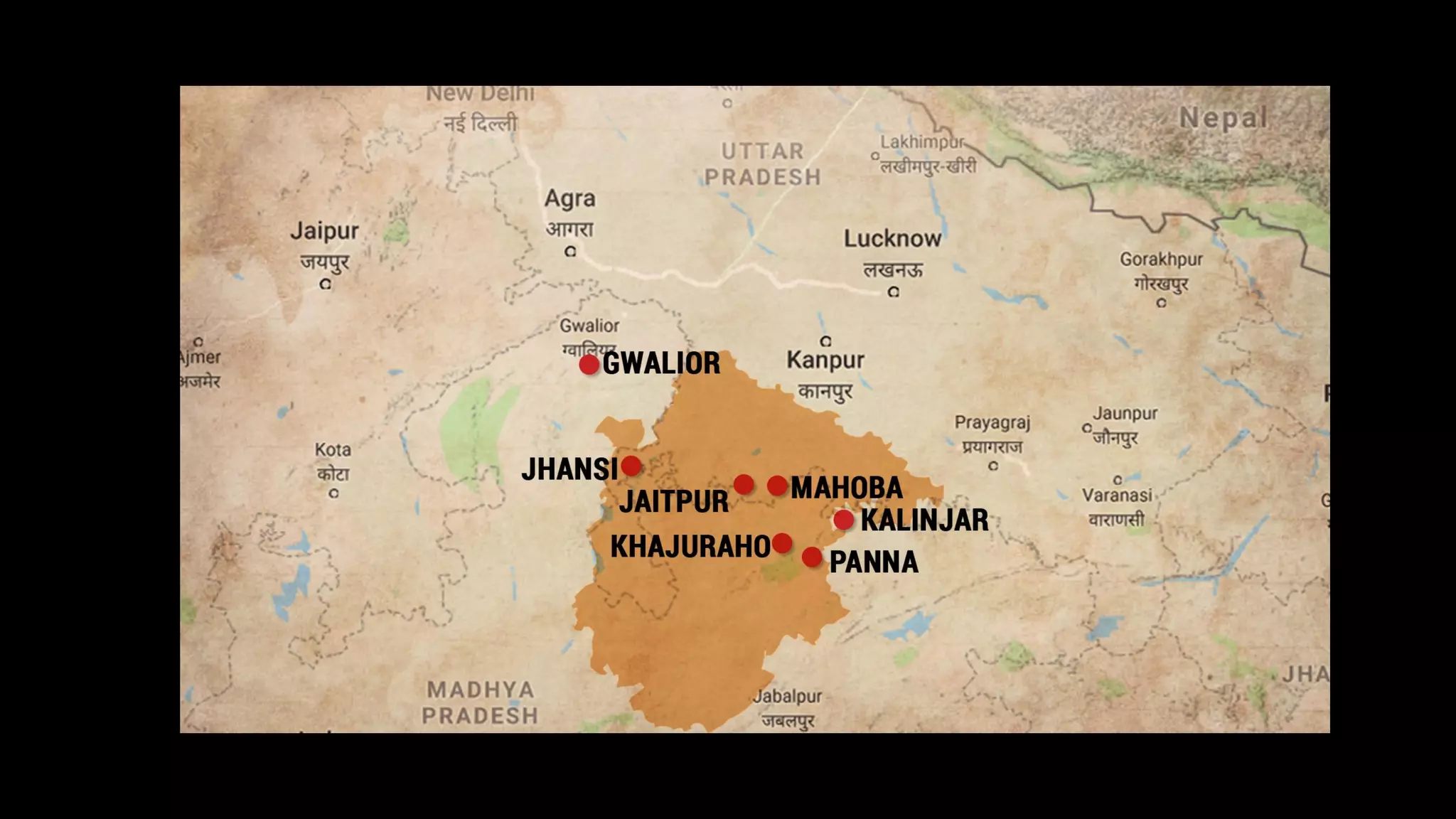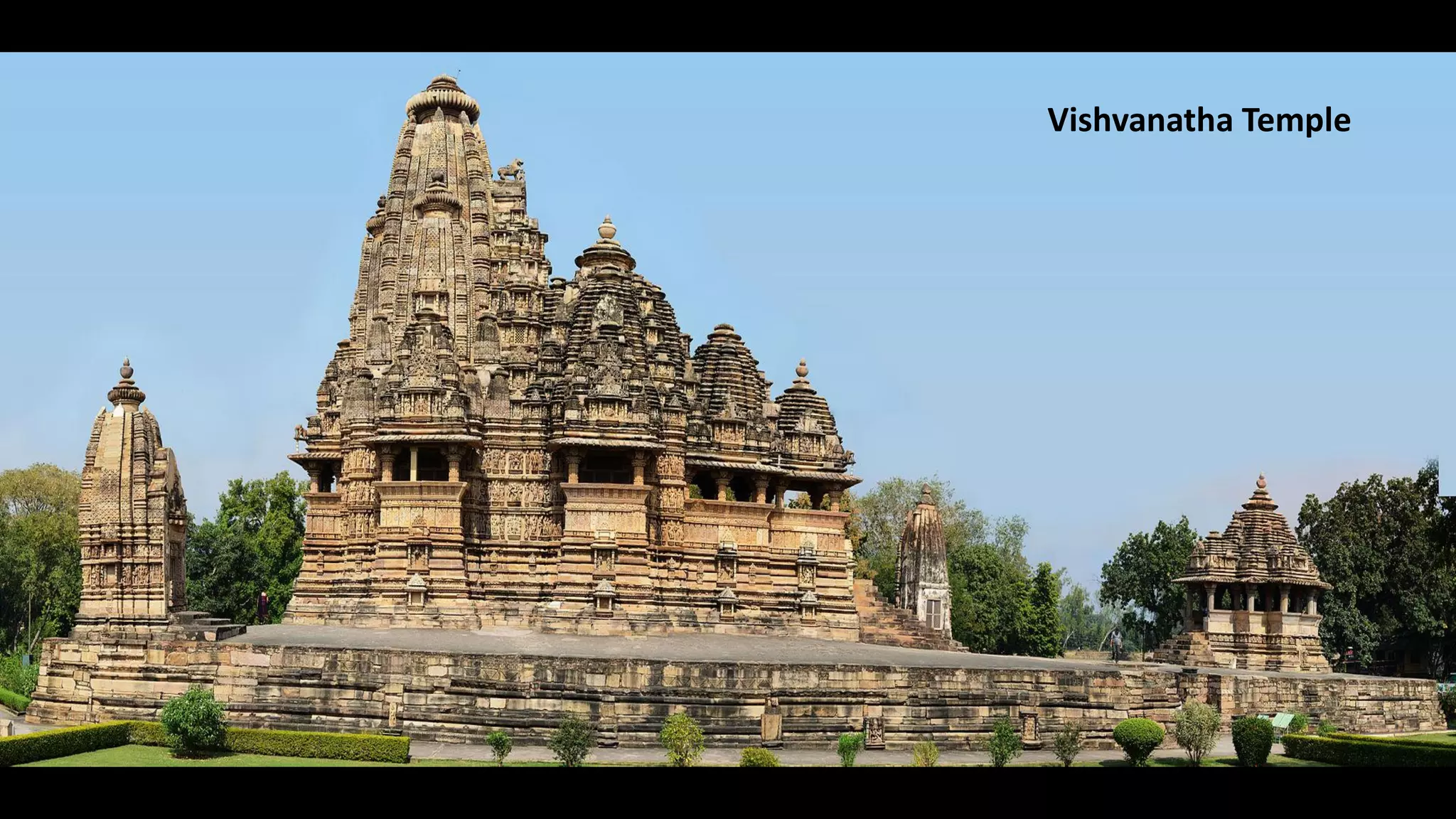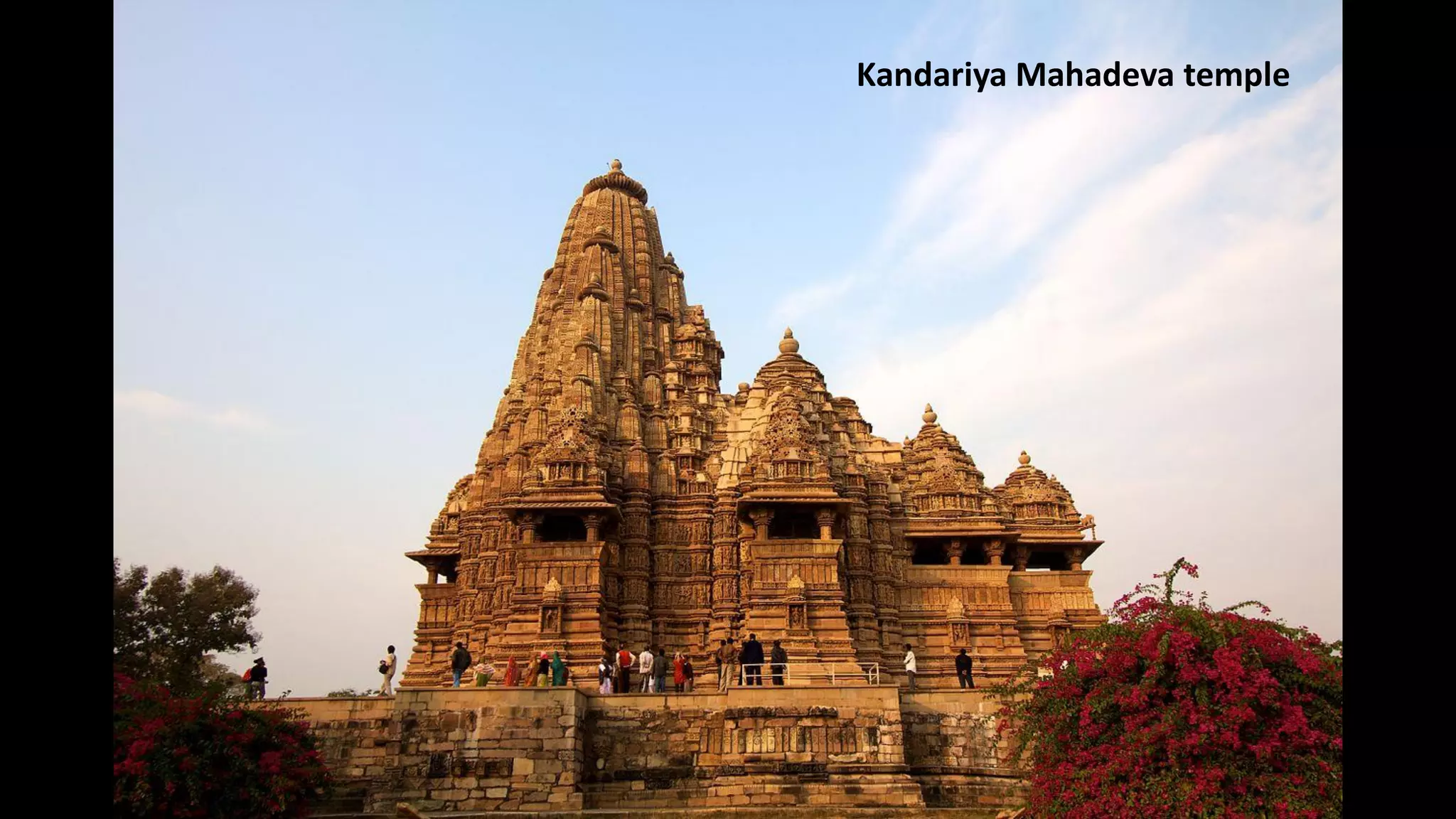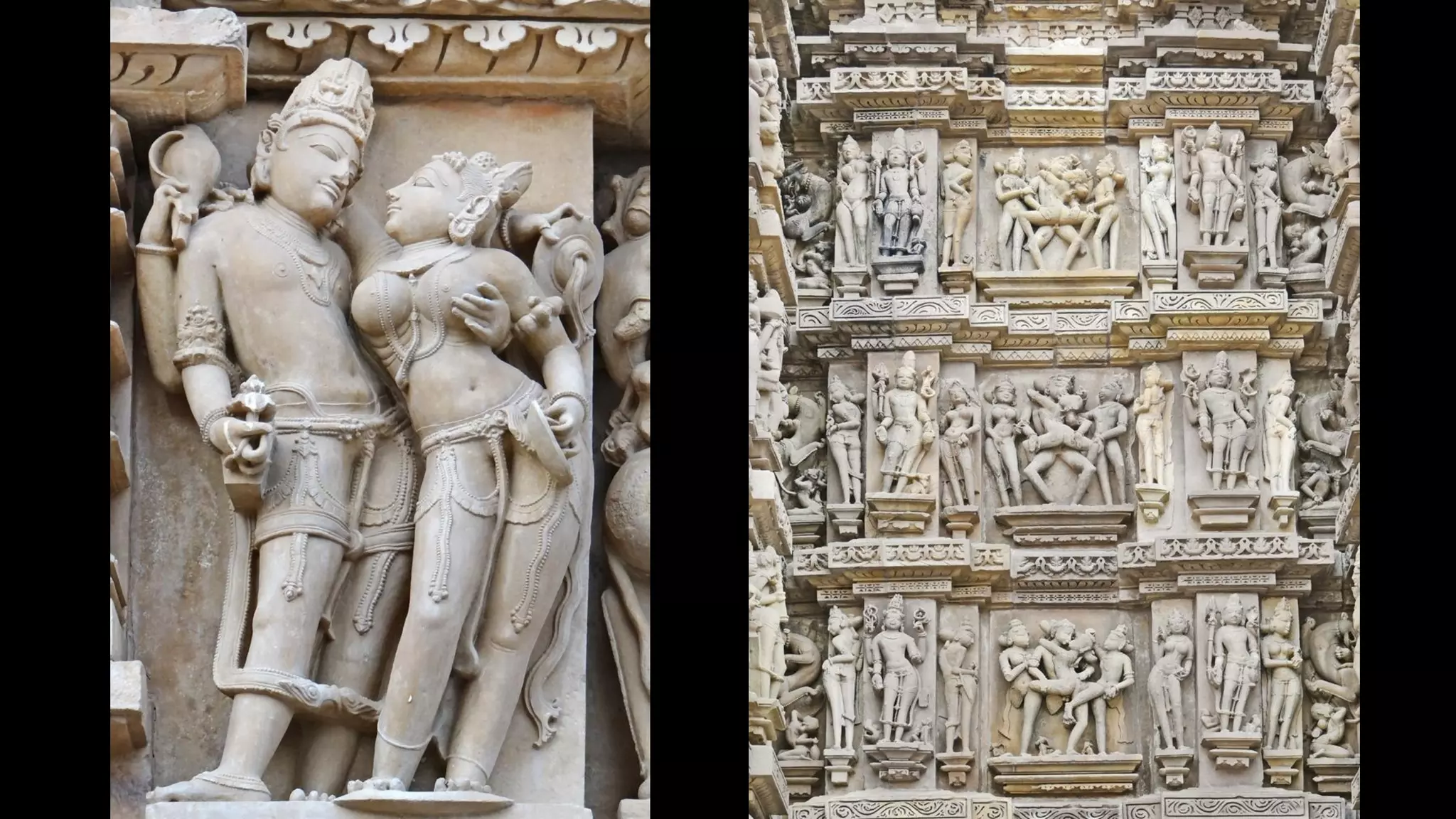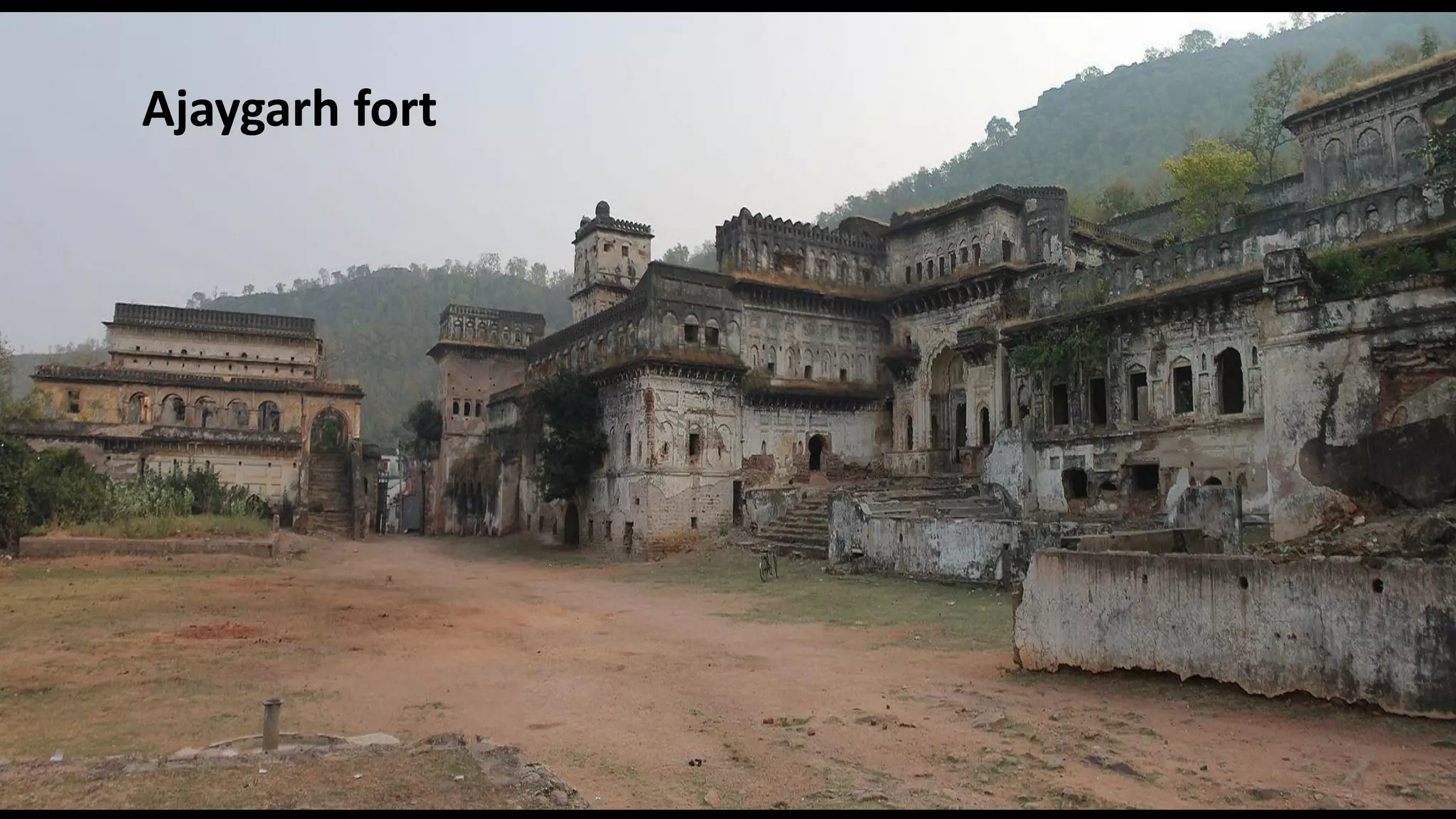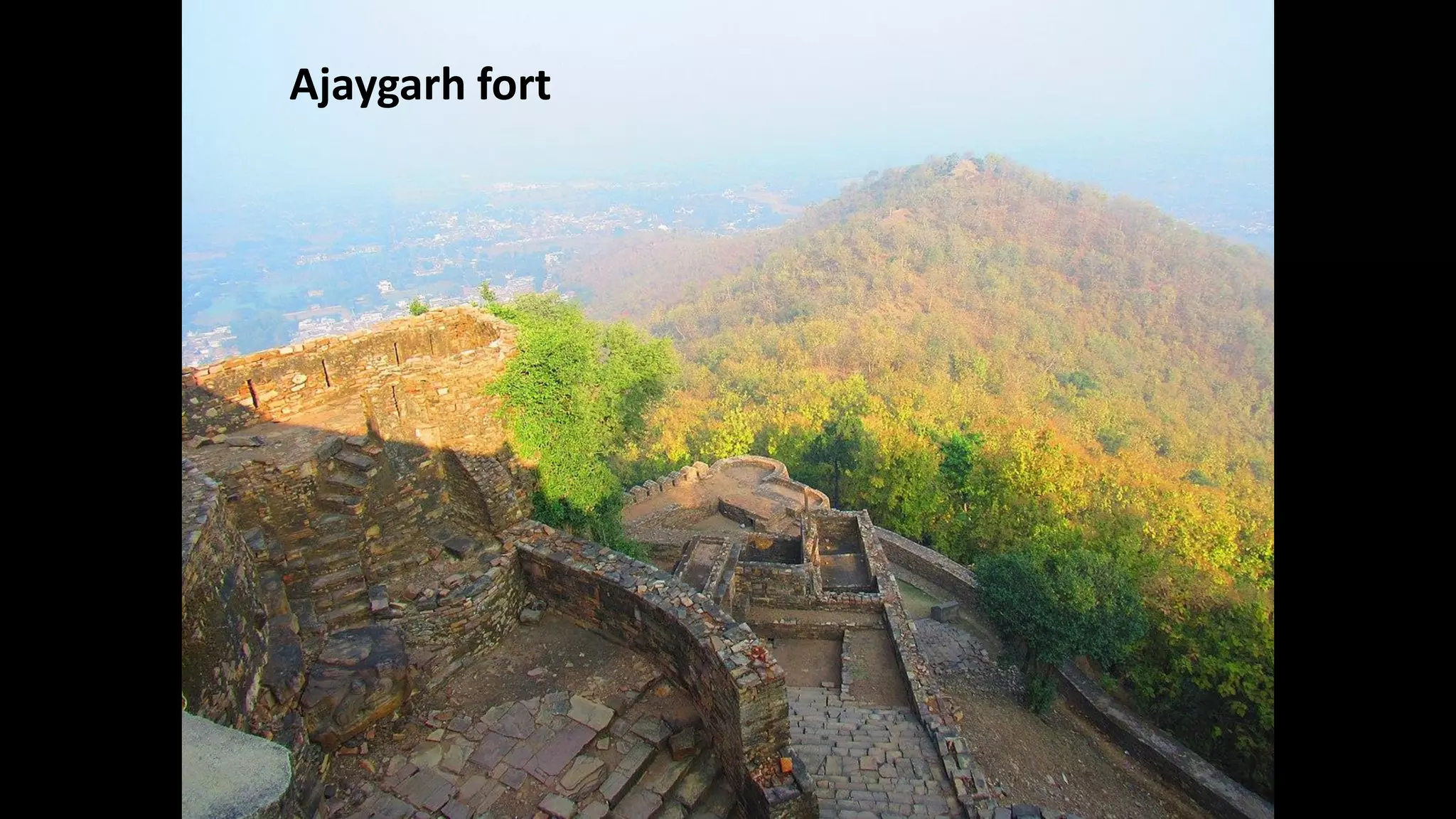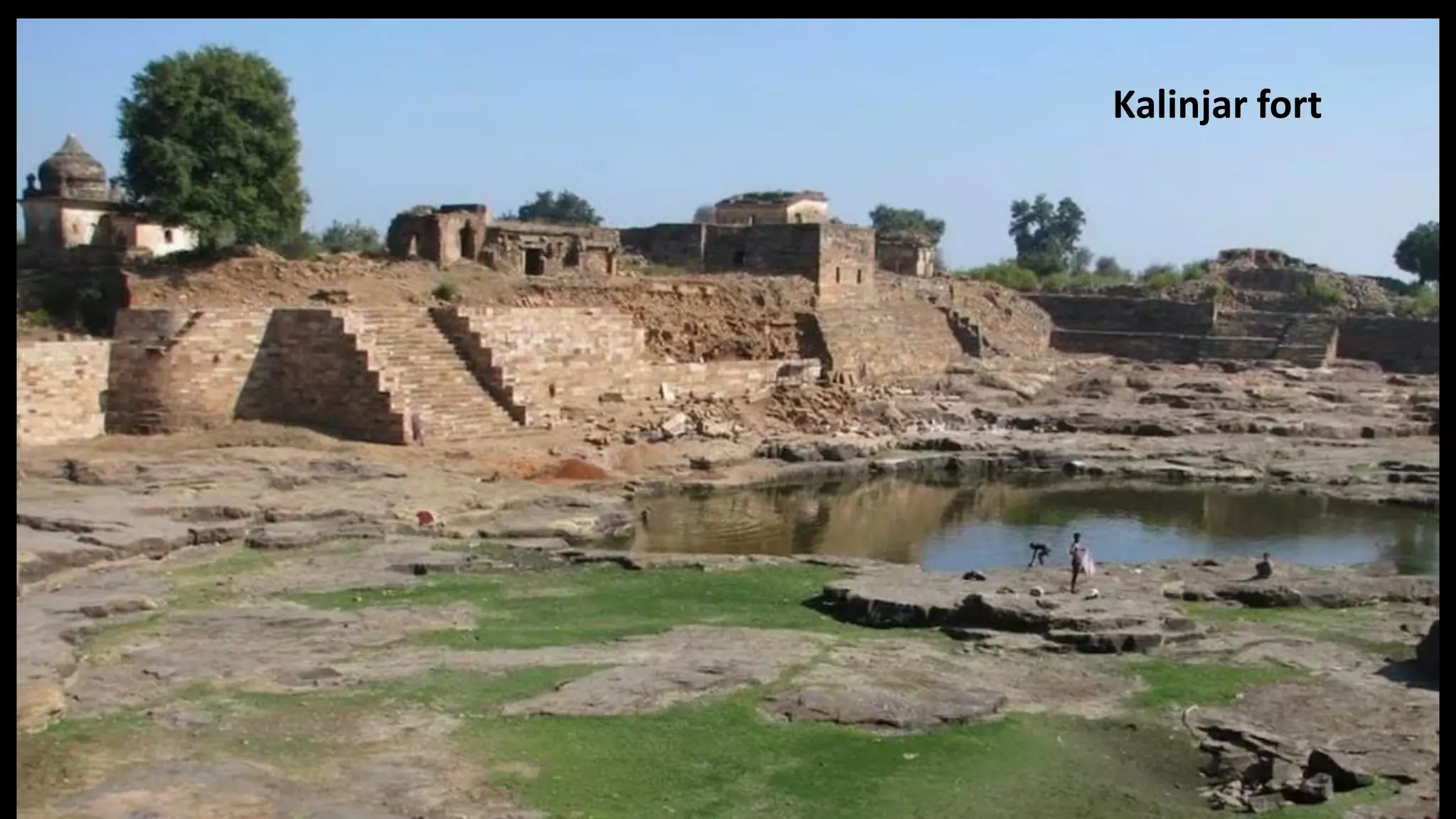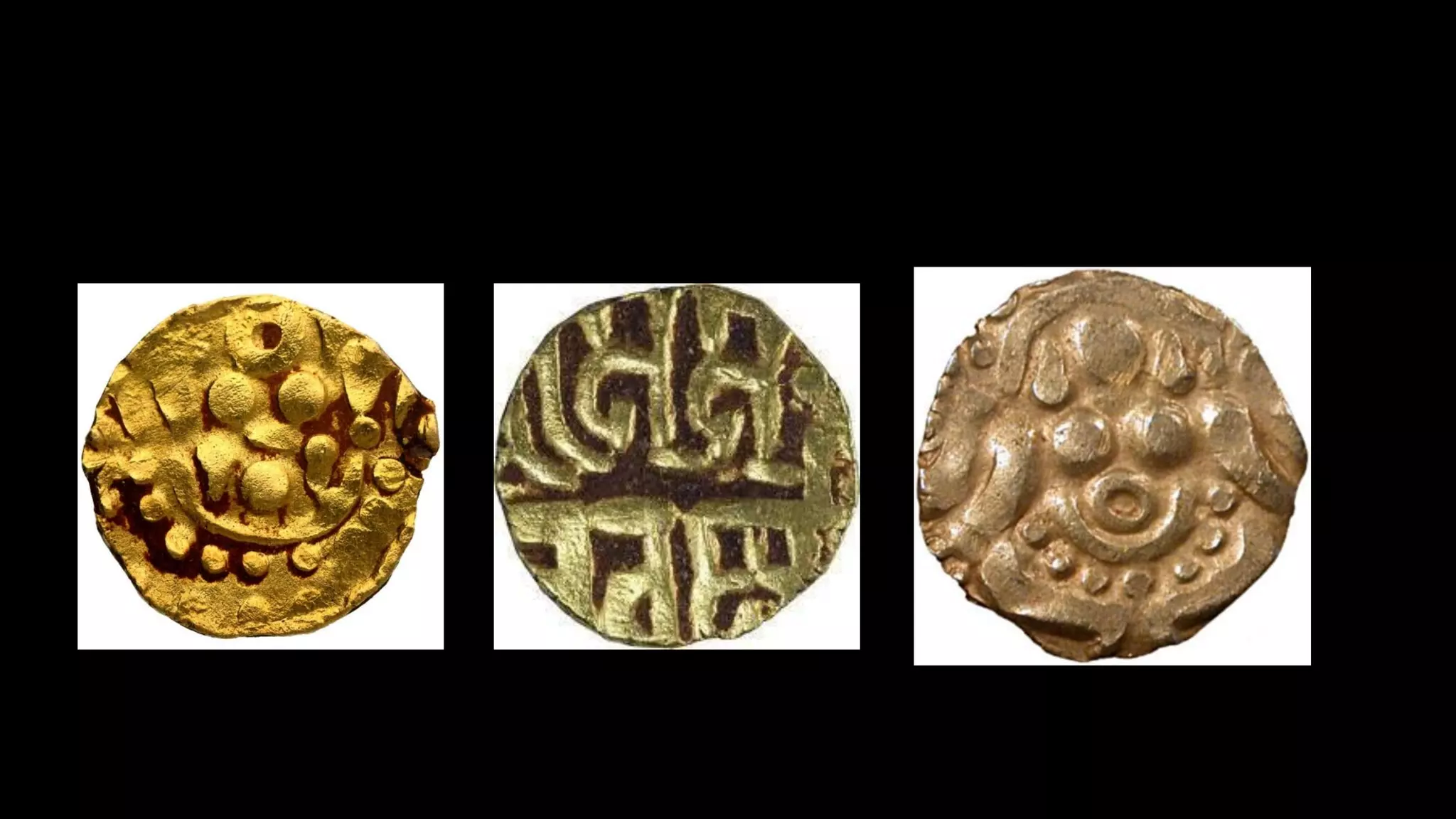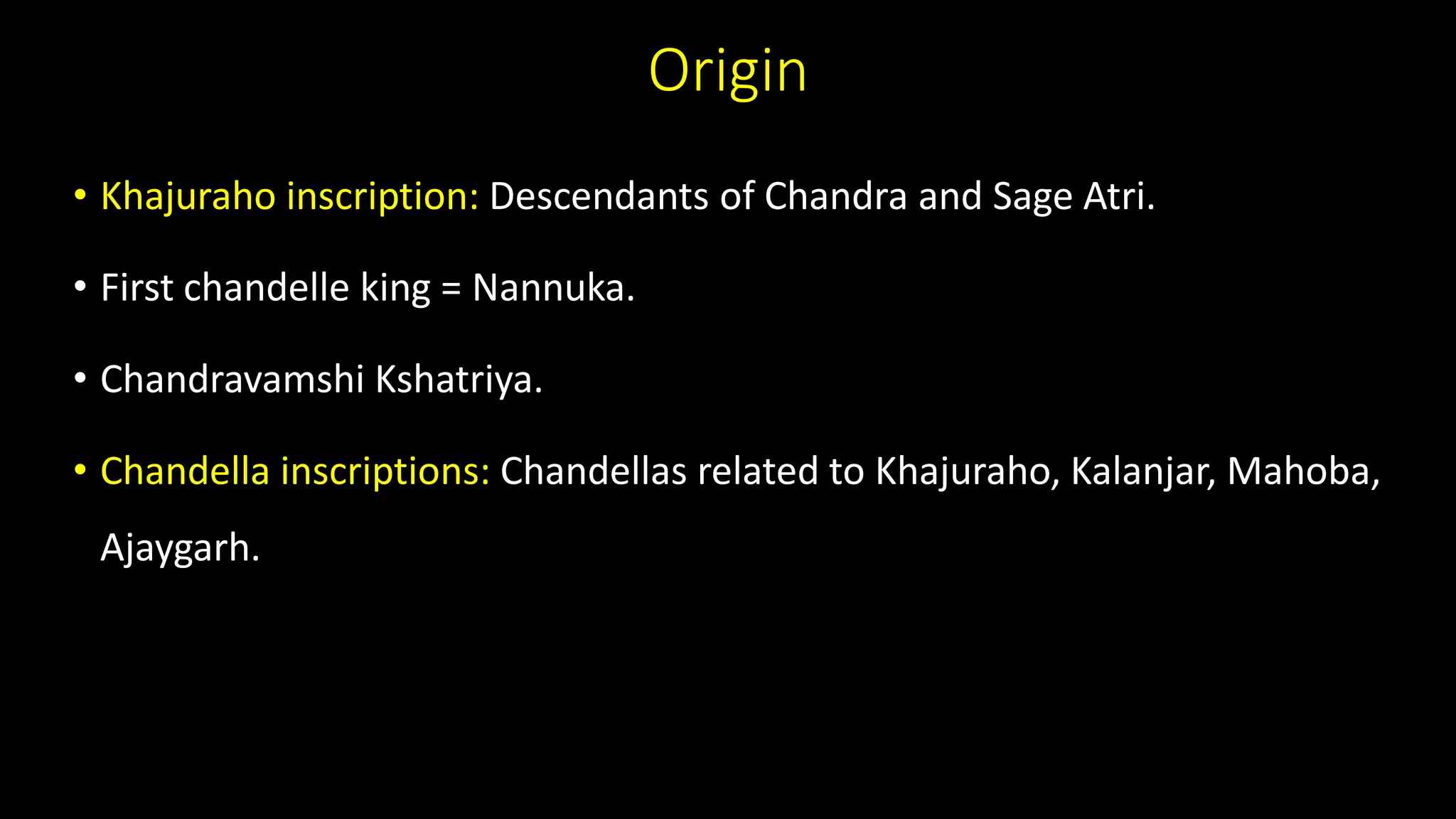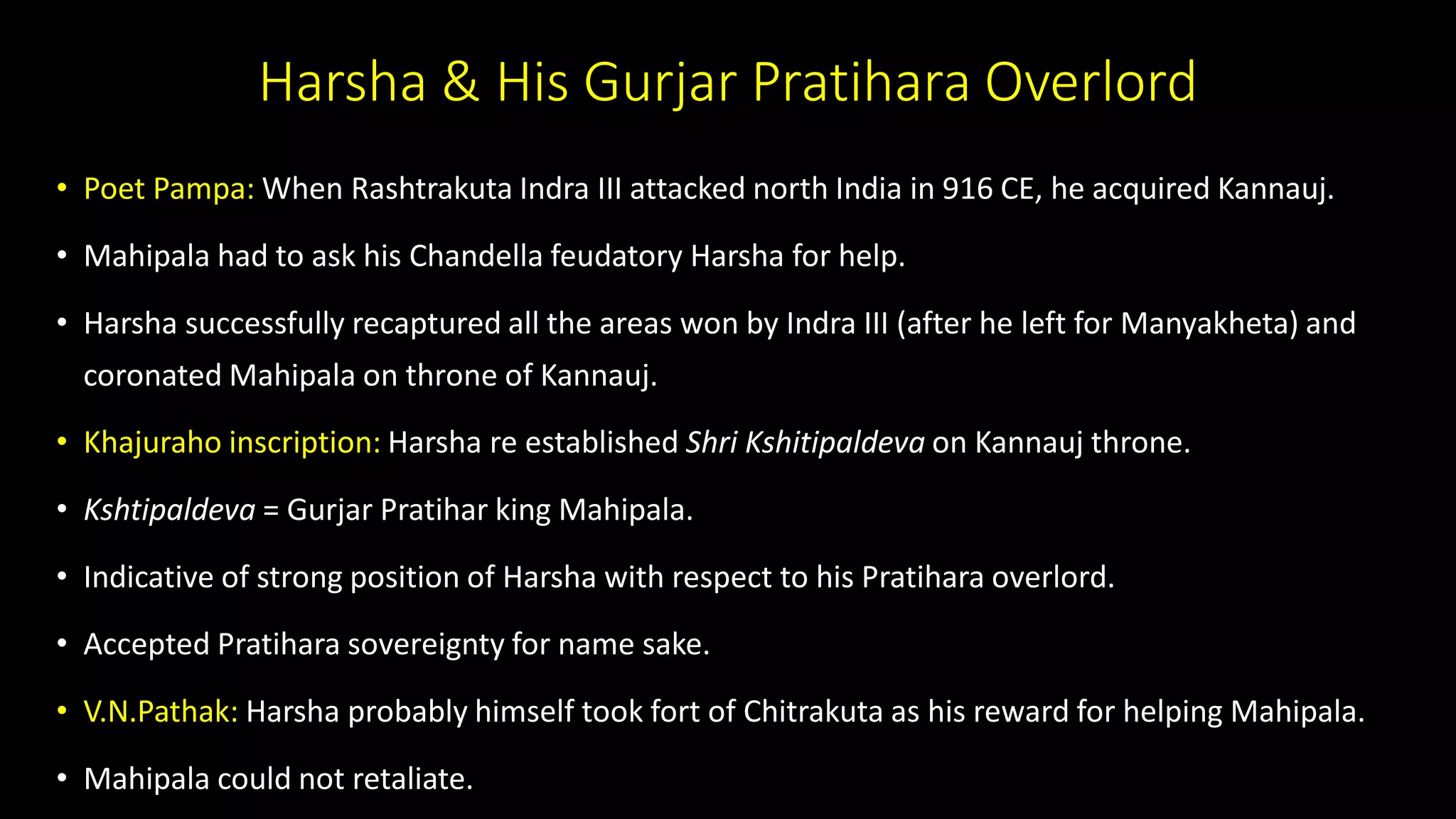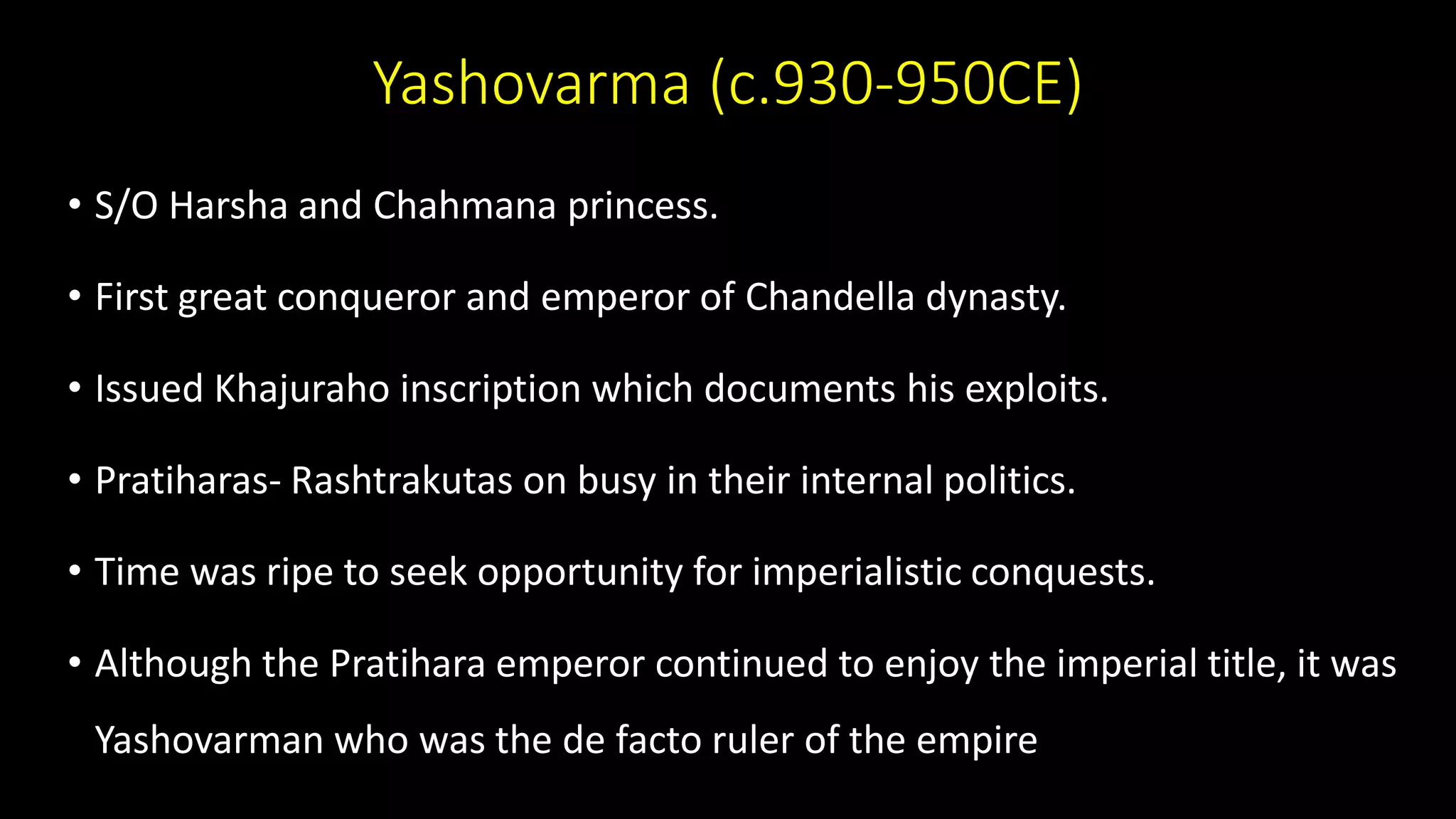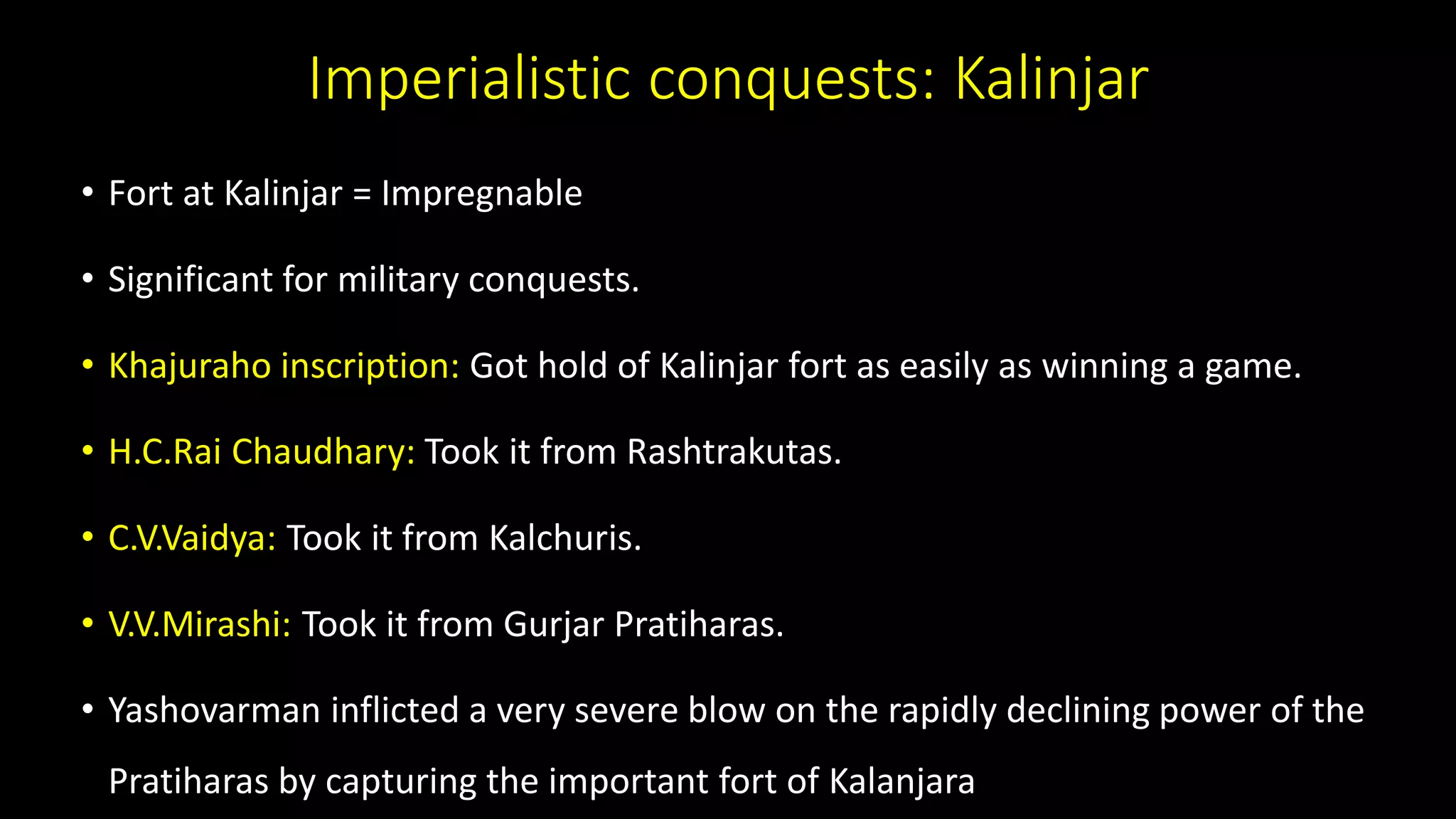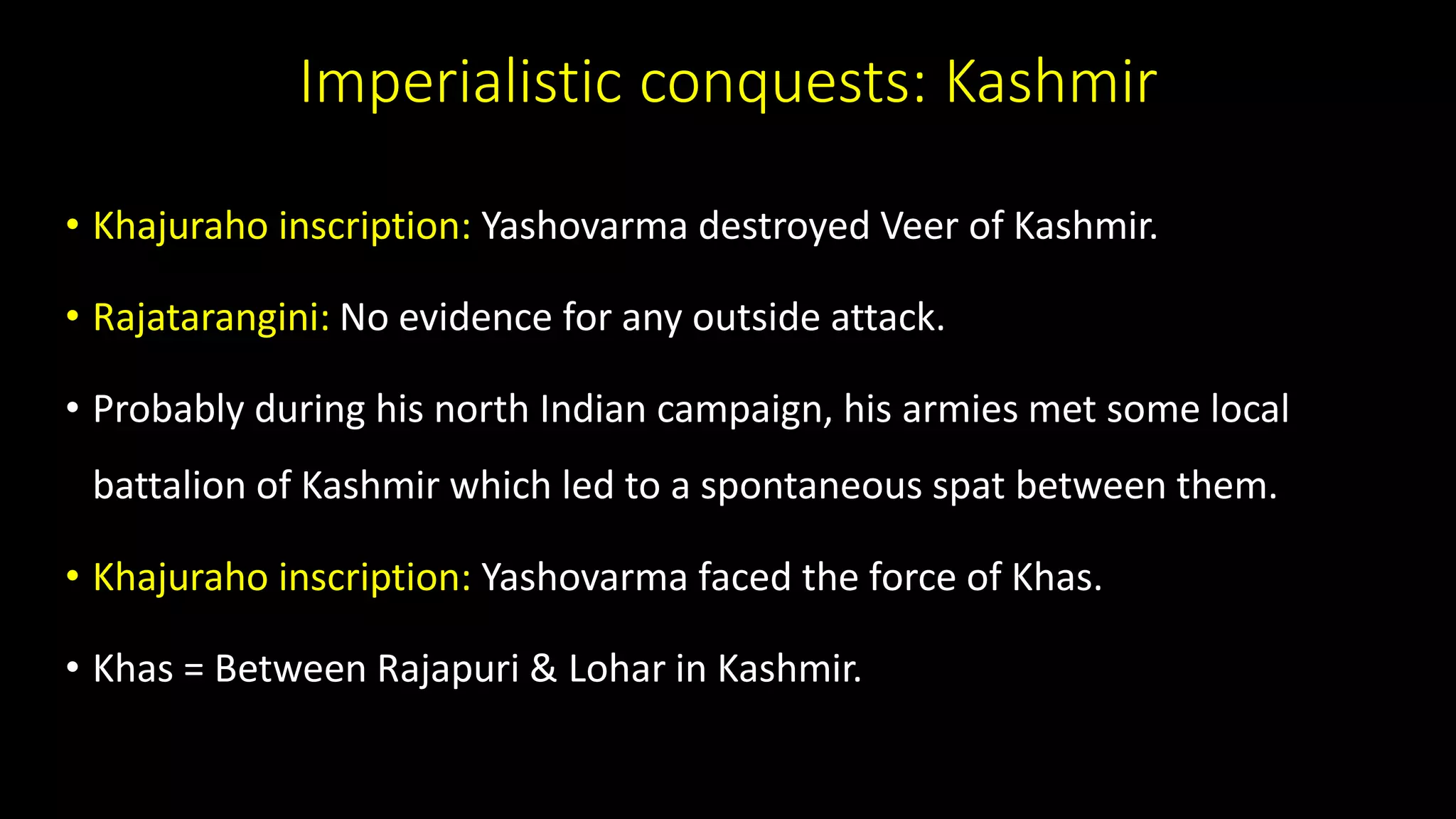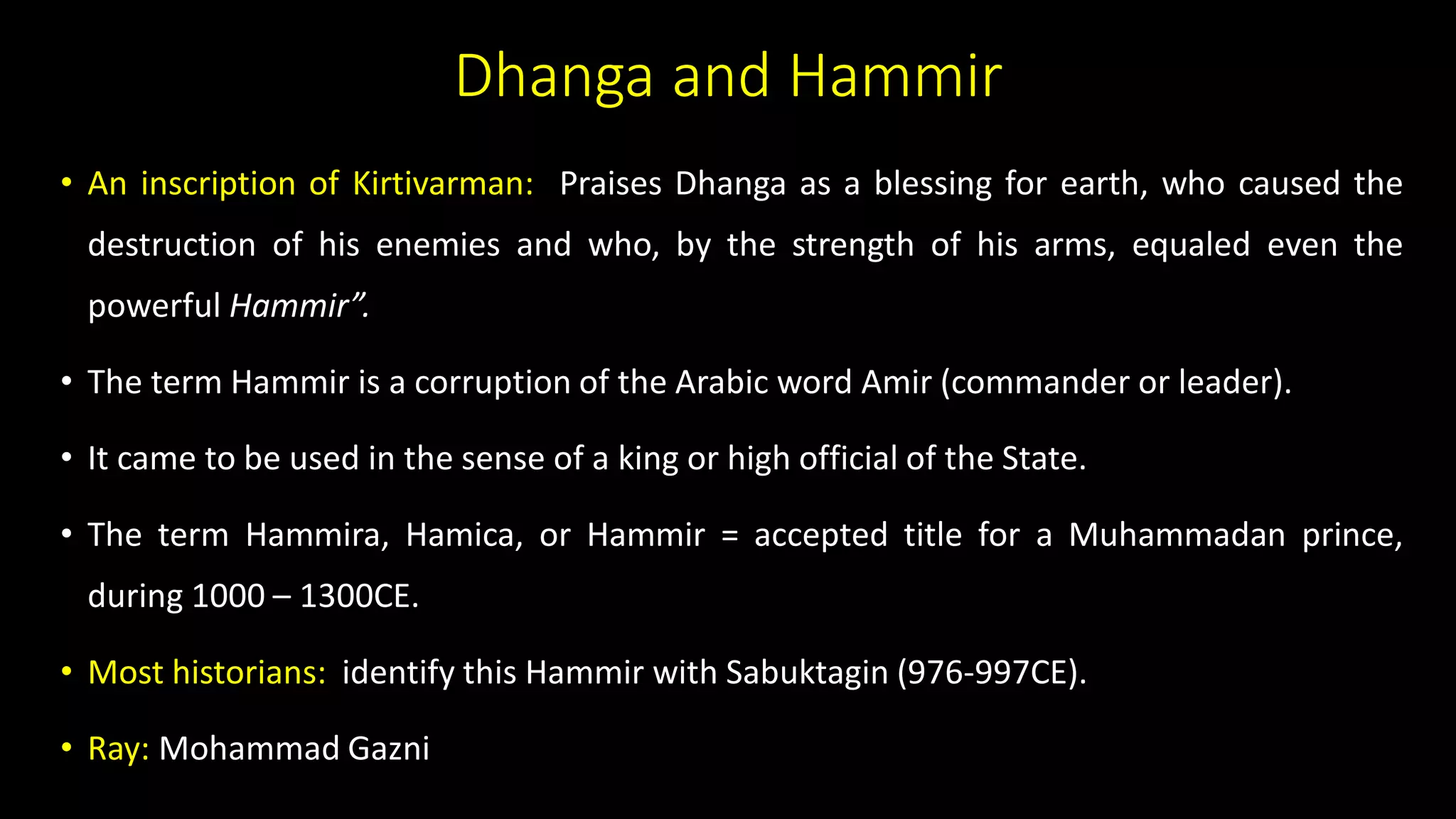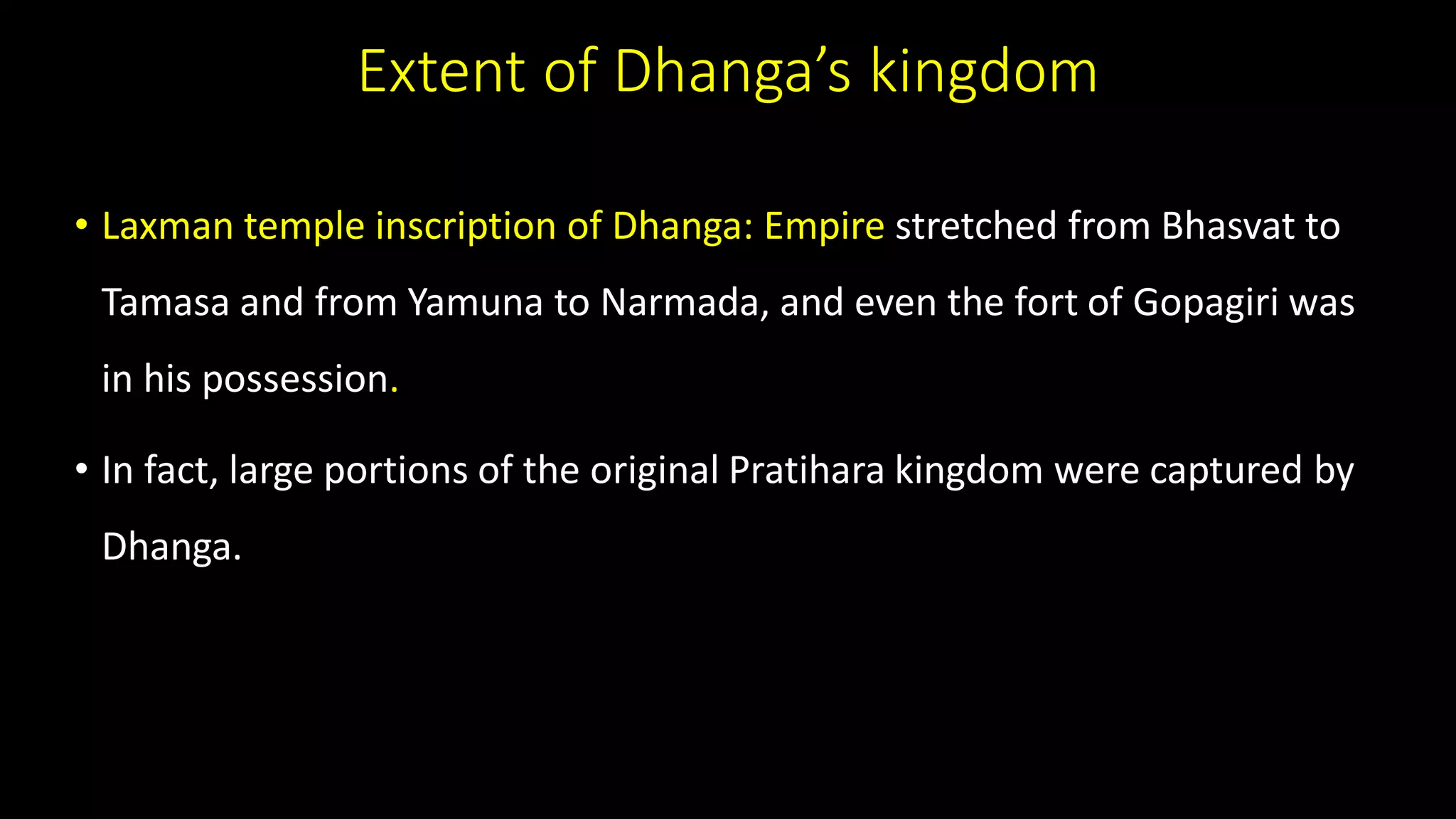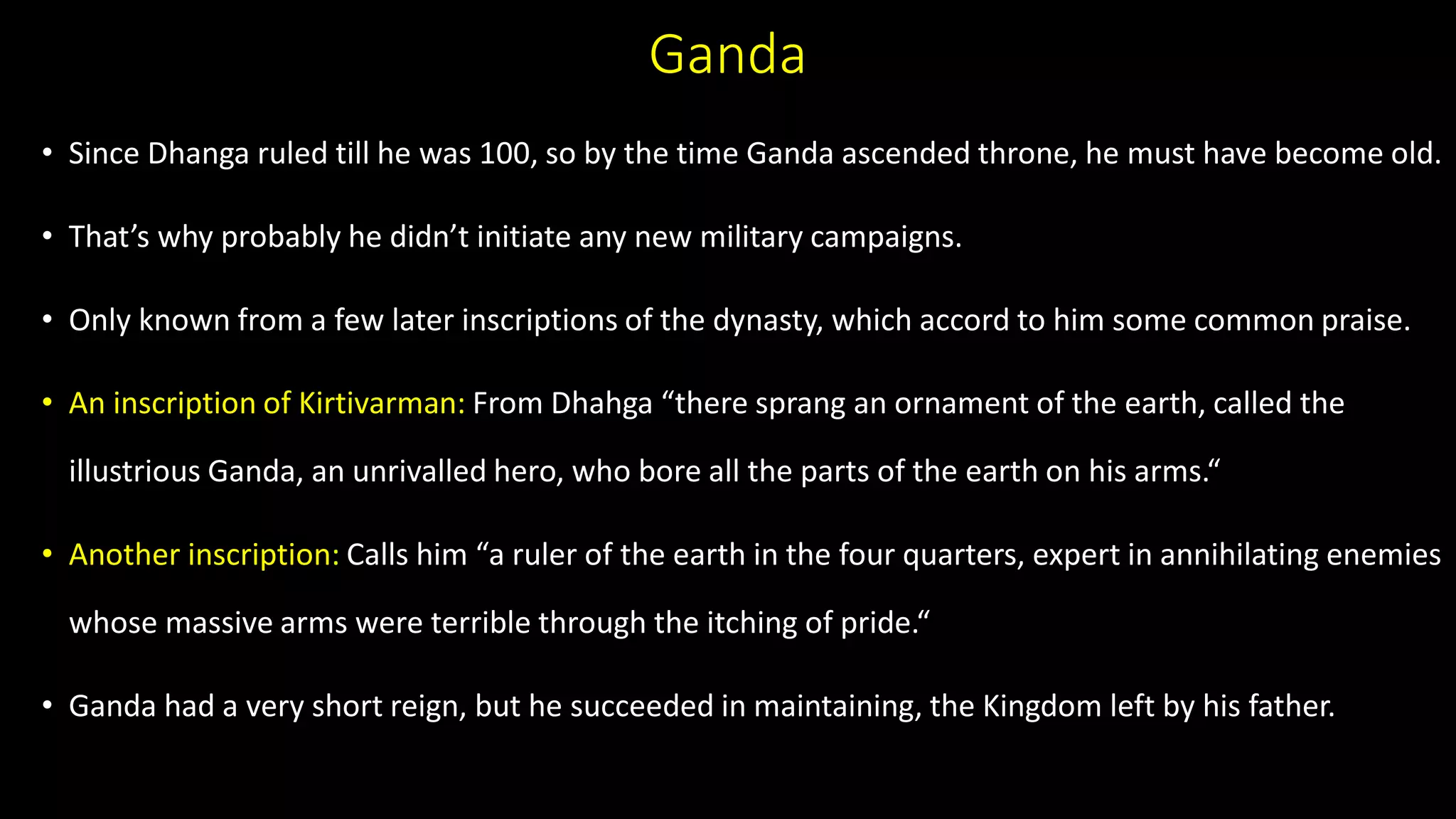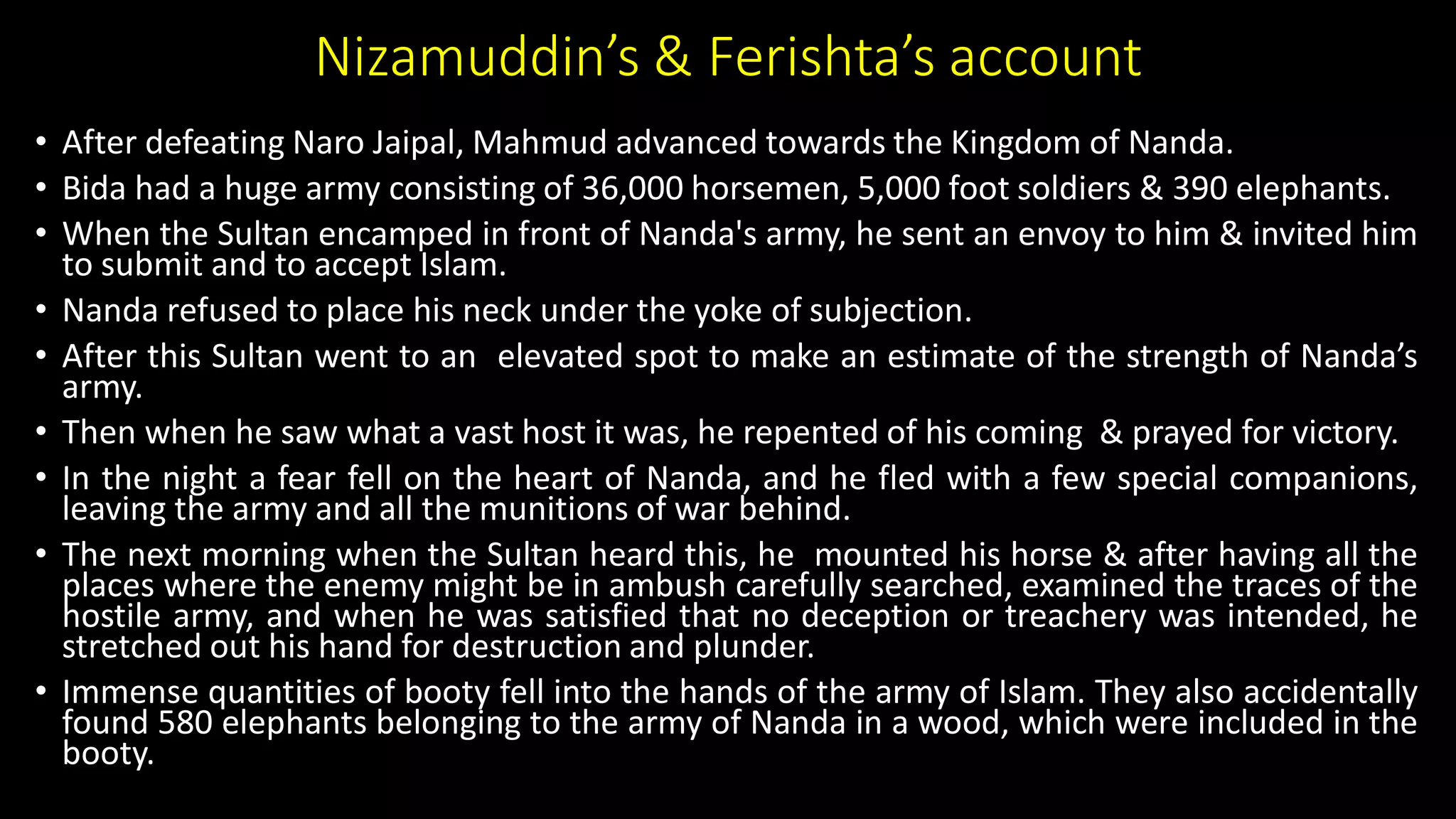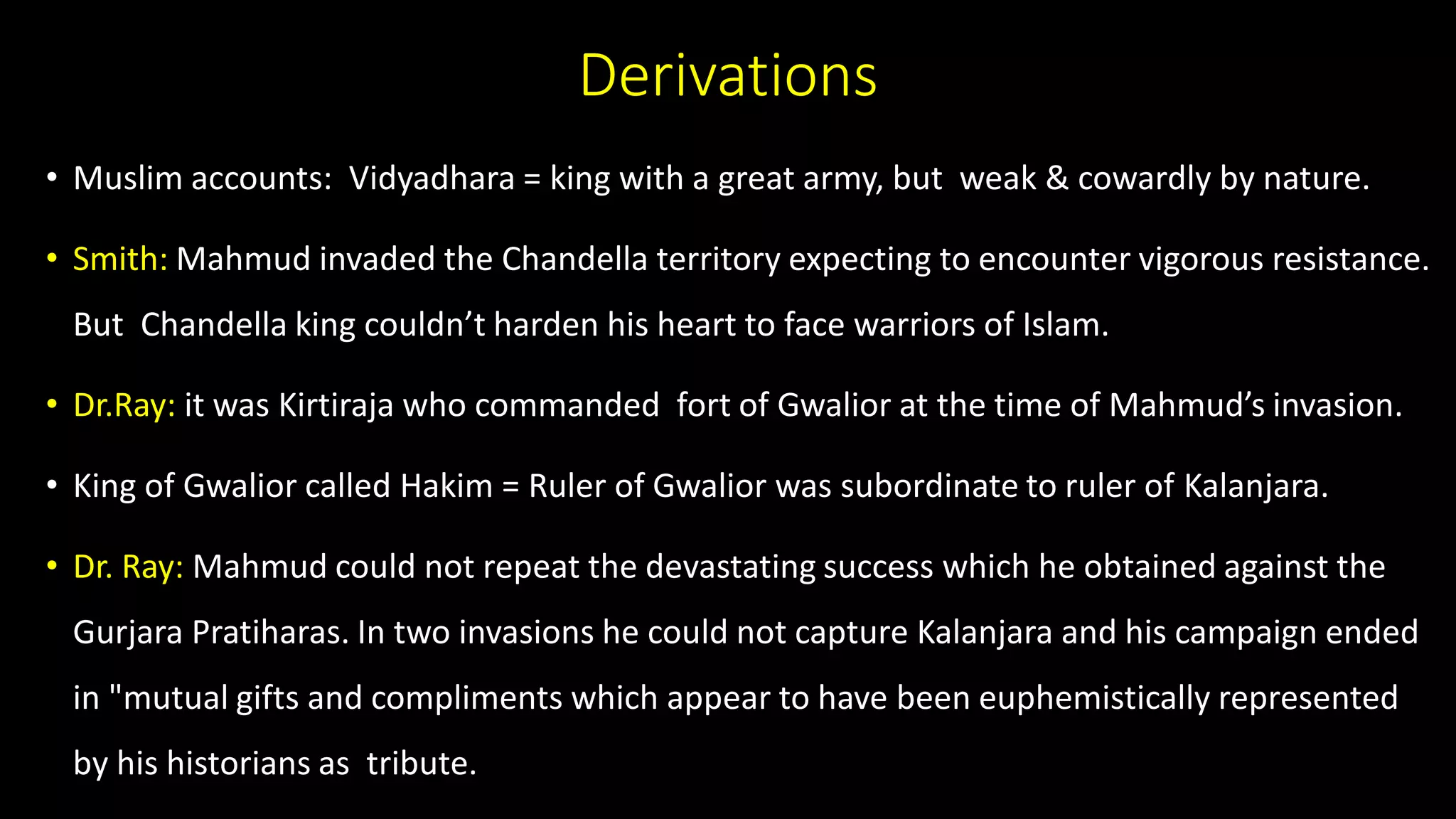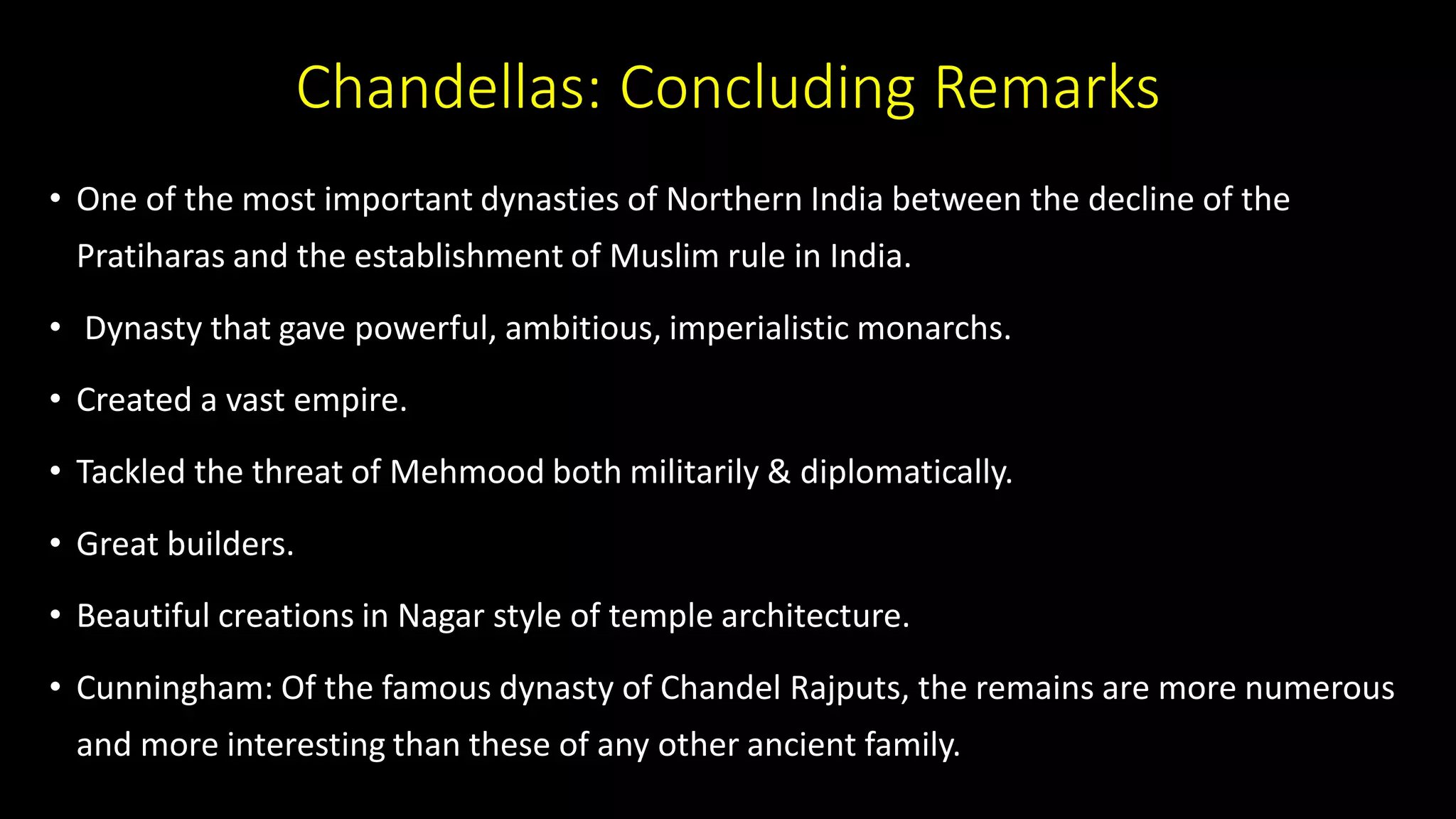The document provides information on the Chandella dynasty that ruled parts of North India between the 9th-13th centuries. It discusses the dynasty's origins in Jejakbhukti and their early status as feudatories of the Gurjara-Pratiharas. It then covers the rise of prominent kings like Yashovarman and Dhanga who established the Chandellas as the preeminent power, replacing the Gurjara-Pratiharas. The dynasty reached its peak under the rule of Vidyadhara in the early 11th century, but later declined with the Muslim invasions of North India. The document draws on various inscriptions and historical texts to reconstruct the dynasty's history





